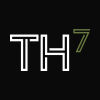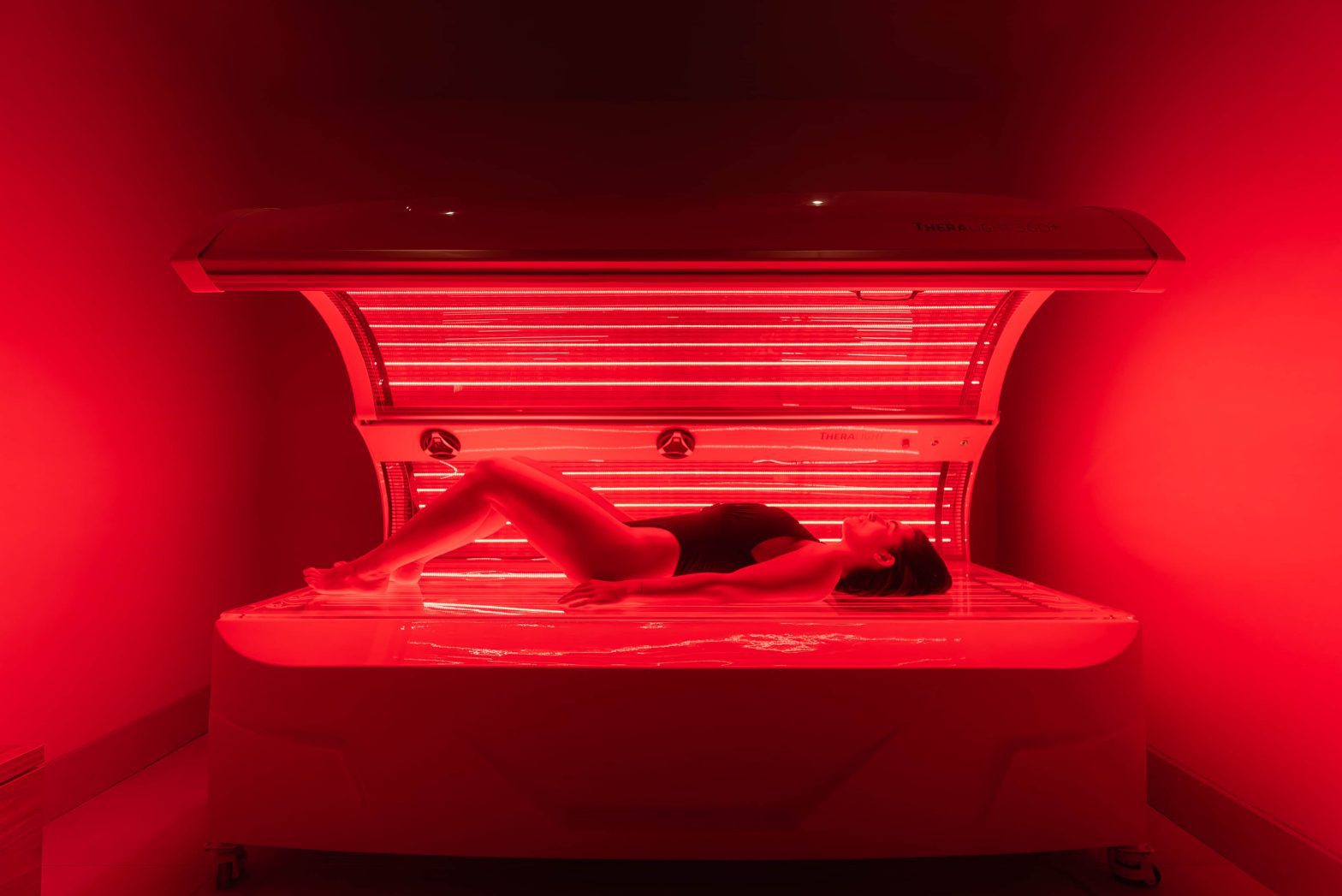More and more dermatologists and estheticians are beginning to use LED light therapy to treat a range of skin issues, often alongside other treatments in the form of creams and ointments. You can even buy red light machines to use anywhere, so if you’re only hoping to target smaller areas such as your face, you can do it from the comfort of your own home!
Today we’re looking into what red light therapy is, how it works, its benefits, and what the research says about using it for anti-ageing, so keep reading below to learn more.
What is red light therapy?
Red light therapy is a treatment that uses a low level of red light to target specific parts of your body, delivering more energy to your cells so they can get to work quicker and more efficiently. RLT is a super popular treatment for improving the skin’s appearance, such as reducing wrinkles, scars, redness, and acne – but it’s also beginning to be used for a range of other medical conditions, too.
RLT is still a relatively new treatment, so it’s still a popular topic within the research field of holistic approaches. However, from the research that we have got about it so far, it seems to be quite promising in terms of effectiveness! There are a range of other names you might hear it go by, including low-level laser light therapy and soft laser therapy, but they all use the same far-infrared light to target the skin and body’s cells.
How does red light therapy work?
Red light therapy works by targeting the powerhouse of the body’s cells, otherwise known as the mitochondria. The light boosts the cell’s energy levels, letting them store more in the mitochondria so they can move and act more efficiently. With more energy, your cells can get to work repairing your skin, boosting new cell growth, and enhancing your skin’s rejuvenation – so RLT is an amazing way to stimulate your body to improve your skin’s appearance without any invasive procedures.
Research suggests that red light therapy can:
- Stimulate the production of collagen to improve the skin’s structure, strength, and elasticity
- Increase fibroblast production, which actually makes collagen and therefore can help build new skin
- Boost blood circulation to the tissue to help it get more nutrients and keep it healthier from the inside out
- Reduce inflammation in the cells, which can cause puffiness and congestion within the pores
4 health benefits of red light therapy for ageing
1. RLT can boost skin health
One of the more researched topics surrounding RLT is its benefits on skin health. It’s been a popular option for treating things like redness, acne, scars, and wrinkles, and it can even be used as a part of photodynamic therapy which activates an agent to help the skin absorb more light – so you can enjoy more benefits from natural sunlight.
The light can affect the collagen in your body, which is a front-runner in anti-ageing benefits. It can also boost blood circulation within your skin tissue, which can help deliver more nutrients to the skin and boost its health this way. A discussion of the research into RLT on skin health found it to have a wide range of applications in dermatology, especially for wound healing, less cell death, and skin rejuvenation.
RLT might be able to benefit skin that’s been:
- Damaged: RLT can improve the appearance of skin that’s been damaged or aged by sunlight, as it can stimulate the rapid production of cells that make collagen proteins – ideal for lifting and tightening skin, which reduces the appearance of wrinkles
- Wounded: If you have a chronic wound, RLT might be able to help encourage new skin growth and boost new blood vessel networks to form and promote healing
- Scarred by acne: There’s some research to suggest that RLT could be an effective treatment for acne and its scars by reducing inflammation and sebum production
2. It’s effective at reducing inflammation
RLT can also encourage the body’s cells to make antioxidants faster, along with lowering inflammatory markers. This type of treatment can also increase circulation to relieve the painful effects of inflammation without more invasive treatments, such as medicines and surgery. The more blood you can get to your inflammation, the more nutrients the cells can benefit from – helping to fight the inflammation as much as possible.
Research into the applications of anti-inflammatory effects of RLT has found it effective in a number of inflammatory conditions, such as arthritis, tendinitis, psoriasis, carpal tunnel syndrome, and even some brain disorders.
As we age, the body develops an increased amount of inflammation that doesn’t go away. This chronic inflammation is often believed to accelerate the aging process and contribute to illnesses associated with aging, such as Alzheimer’s disease and arthritis. So, the potential of RLT being able to reduce inflammation can boost anti-aging – other than just in appearance.
3. It can reduce dental pain
More and more dental professionals are also using RLT to help with various dental conditions, as it can be effective in reducing pain, inflammation, and even ulcers. It might also be able to reduce the number of unhealthy oral microbes within your mouth.
RLT has been used in a number of dental treatments already, including: Temporomandibular dysfunction, Periodontitis, Burning mouth syndrome, and Stomatitis. As we age, our teeth can become more sensitive and painful if we don’t look after them. So, using RLT to reduce dental pain and unhealthy bacteria within the mouth can keep us feeling our best – and therefore younger.
4. RLT can support the body’s natural healing processes
There are a number of other conditions that RLT can help with thanks to how it supports the body’s natural healing processes by stimulating the cell’s energy levels. For example, RLT can help with:
- Preventing cold sore development: If you suffer from cold sores, RLT might be able to prevent them from coming back
- Alzheimer’s disease: A concentrated amount of formaldehyde in the brain is associated with memory loss and oxidative stress, but some research has suggested that RLT can break down formaldehyde and improve cognitive function in adults suffering from Alzheimer’s
- Anxiety: Limited studies have also shown that RLT can stimulate the brain to improve symptoms of anxiety, as well as offer indirect benefits such as improved sleep
How to use red light therapy for the best results
The best way to use red light therapy for the best anti-ageing results is exactly as your dermatologist recommends, as they’ll know your skin and overall health best. However, in generalised terms, using RLT three to five times a week for between 5 and 20 minutes can improve the appearance of your skin within just a few weeks.
RLT can be difficult to get used to – especially if you’re completely new to it. So, not everyone manages to sit through a long session to begin with – but don’t give up! Instead, try exposing yourself to it for a few minutes at a time to get used to it. The red light can make your skin quite warm, which might be difficult to get used to if it’s your first session, so listen to your body and don’t rush your treatments!
Final thoughts
Red light therapy has been shown to have anti-aging properties, so it can be an effective method of making you look and feel younger! Some of the benefits that can contribute to anti-aging are improved skin rejuvenation and appearance, reduced inflammation, and supported natural healing processes of the body. The fact that RLT goes beyond the skin and boosts anti-aging benefits from the inside out makes this a wonderful option if you’re looking for a non-invasive treatment.




